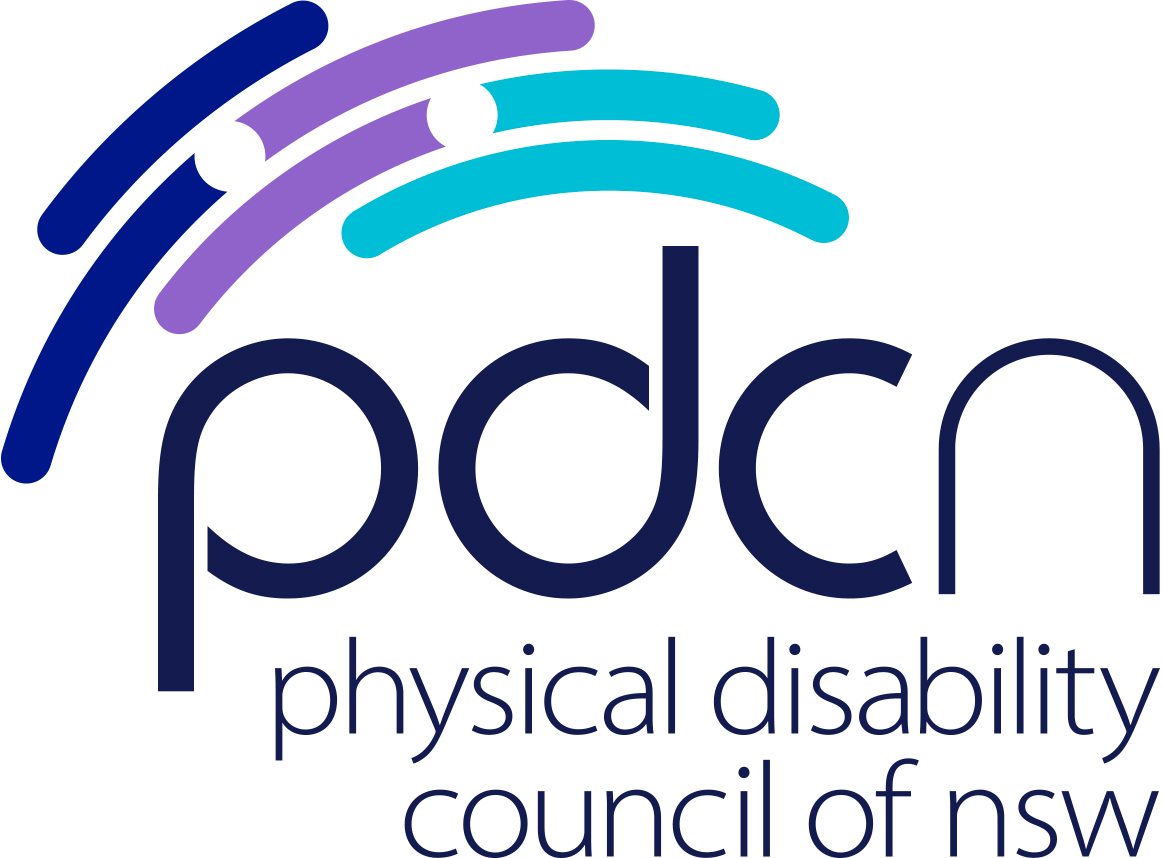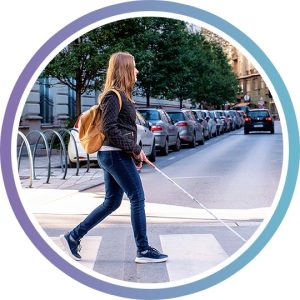
After undergoing a landmark modernisation process, the Disability Standards for Accessible Public Transport 2002 (DSAPT) proposed reforms were finally released in March 2024 by the federal Department of Infrastructure, Transport, Regional Development, Communications and the Arts (Department of Transport and Infrastructure). The objectives of the standards are to minimise discrimination faced by people with disabilities using the public transport system. This is the first time in 20 years that there has been a review and proposed updates to the legislation that assists the Australian Government to fulfil its commitments under the United Nations Convention on the Rights of People with Disability and the Disability Discrimination Act regarding public transport. The Standards cover all aspects of public transport, including trains, buses, and ferries, as well as infrastructure. The Standards also provide a guide to public transport providers on what the government expects in terms of inclusive transport, acting as the baseline of accessibility.
The modernisation process covers a total of 76 reforms within the DSAPT, covering all areas of public transport across Australia. This concerns the way in which regulations and standards are enforced and monitored for certain aspects of transport, including reporting, rideshare, communications and wayfinding to fare systems and physical access. While this is federal legislation, it is the responsibility of the states and territories to harmonise their transport system’s rules and regulations in compliance with the DSAPT and is left to the state transport government bodies to implement accordingly.
A lot can change in the transport world in 20 years, with transport technology and infrastructure constantly the subject of innovation. We hear stories from our members of issues with public transport at every consultation, with much of this caused by outdated infrastructure and processes that have not been renewed or updated to acceptable standards for accessibility. This has locked people out of being able to use essential public transport. This modernisation of the regulations of accessibility for public transport is long overdue.
In August of 2022, PDCN made a submission to the Department of Transport and Infrastructure’s DSAPT modernisation process, informed by consultations with our members on what was and wasn’t working for people with physical disabilities using public transport. This submission detailed the preferred option for our members for each of the 60 areas of reform under the Stage 2 reform process. Now the proposed reforms have been released nearly two years later, we can look at how some of these insights have been considered.
Summary of Recommendations
Reporting
PDCN supported the regulatory option in the suggested reforms.
The Department of Transport and Infrastructure chose the non-regulatory option as preferred in the official decision document.
Reporting relates to how rules are followed, and the handling of problems related to public transport, whether that be customer service, certain processes, or physical barriers. Currently, this works as a complaints-based mechanism for driving compliance with the DSAPT, placing the onus on people with disability who use public transport to complain when things go wrong, and places unnecessary burden on the community to hold public transport providers accountable for accessibility compliance.
PDCN supported the regulatory option in the suggested reforms, which would require public transport operators and providers to report data for all new or substantially refurbished/upgraded conveyances, infrastructure and premises and all assets for select sections of the Standards. This would make sure that new and upgraded transport is kept in accordance with the appropriate levels of accessibility, and that these standards are not just being ignored. The non-regulatory option was chosen as preferred in the official Department of Transport and Infrastructure decision document.
It is inferred through the official government decision document that a regulatory option is possible in future, however due to the non-existence of an official mandatory regulatory framework for compliance, it is not possible to implement the regulatory option at this stage without incurring large costs. The development of a mandatory framework is suggested through working groups consisting of representatives of people with disability, state and territory governments, and operators and providers of public transport, taking a co-design approach toward a regulatory reporting system in the future.
Rideshare
PDCN supported the regulatory option in the suggested reforms.
The Department of Transport and Infrastructure chose the status quo option as preferred in the official decision document.
The definition of rideshare and whether it comes under the jurisdiction of the DSAPT is unclear, and this lack of clarity is recognised by the Department of Transport and Infrastructure in the proposed reforms. This was noted in PDCN’s submission, and in light of this, PDCN proposed the regulatory option as best practice. The regulatory option would amend the DSAPT to ensure rideshare services are explicitly identified in the Transport Standards, and applicable Transport Standards requirements for taxi-travel are fit for purpose as well as being applied to existing and emerging rideshare vehicles.
While the preferred option from the Department’s proposed changes is the regulatory option, in the reform process it has been decided that rideshare will remain as status quo pending consultation. This is to allow for consultation with disability groups and stakeholders through a working group to undertake a holistic review of point-to-point transport and understand the scope of the problem and the best practice solution going forward.
Dedicated School Buses
PDCN supported the regulatory option to remove all dedicated school bus exemptions.
The Department of Transport and Infrastructure chose the status quo option as preferred in the official decision document.
Currently, dedicated school buses are exempt from complying with the DSAPT, meaning there are no regulations or standards of accessibility compliance for school buses. This has meant that children with disabilities who are unable to access non-compliant school buses are forced to rely on wheelchair accessible taxis or private vehicles to get to and from school.
PDCN supported the regulatory option to remove all dedicated school bus exemptions, however the official decision has chosen to remain as status quo. This was decided under the reasoning that the ‘high cost to remove the or reduce the exemptions for dedicated school buses, the lack of available data in submissions about the experience of students who use mobility aids and data on the prevalence and effectiveness of equivalent access solutions limits the ability to impose legislative requirements without further information’.
Despite the status quo decision, there is an additional decision to recommend the development and implementation of a targeted consultation plan with relevant stakeholders to better understand the issue and potential to develop options for reform.
Communication
Real-Time Communication
PDCN supported the regulatory option in the suggested reforms.
The Department of Transport and Infrastructure chose the non-regulatory option as preferred in the official decision document.
Current standards do not include requirements for real-time communication between operators and providers and people with disabilities. This becomes an issue for people with disabilities who require specific information for their journey, and if this is not received, will be unable to make their journey on public transport, give feedback or make a request for assistance. The lack of real-time communication means people with disabilities will be forced to rely on outdated information and be unable to make accurate decisions for their transport journey.
PDCN supported the regulatory option in this instance, which would see it enforced that passengers have a way to communicate with transport providers in real time before boarding, while on their preferred mode of transport, and when getting off. The non-regulatory option was chosen in the official decision for reforms, as a looser and guidance-driven approach to the issue. This non-regulatory approach would see changes made and encouraged, but not enforced.
Location of Signs
PDCN supported the regulatory option in the suggested reforms.
The Department of Transport and Infrastructure chose the regulatory option as preferred in the official decision document.
Current locations of signs for public transport are based on outdated design standards from 1992, this has meant that current standards for signage have often been confusing or based on older designs that are now not in use but were still part of official regulatory documents. The proposed changes in the modernisation of the DSAPT would update these standards to align with appropriate accessibility standards.
Both PDCN and the official decision document recommend the regulatory option, which will change technicalities such as ensuring the location of important signage is visible from seated and standing positions, and at appropriate heights in crowded and uncrowded areas. These new changes will require guidance from stakeholders and will be an ongoing process.
Mobile Web Systems
PDCN supported the regulatory option in the suggested reforms.
The Department of Transport and Infrastructure chose the regulatory option as preferred in the official decision document.
Developments in technology are not considered in the DSAPT, despite recent major technological developments. Since its last update in 2002, there have been huge changes to the way we use technology and major innovations in mobile phones and our interactions with the internet.
It has been recommended by the official document from the Department of Transport and Infrastructure that regulatory changes need to be made in the modernisation of the DSAPT. Mobile and personal technology devices are commonly used by members of the community for the gathering of information. This is especially relevant in the context of public transport use and trip planning. In our submission PDCN supported the regulatory option, also supported by the Department’s official decision. This means that the Transport Standards will be amended to include new requirements for mobile web system provisions, and all information provided by an operator or provider must meet WCAG 2.1 AA requirements as a minimum. This would allow more accessible mobile web platforms for planning transport journeys and receiving real time updates and trip information and require these platforms to be accessible for people with disabilities.
Accessible Fare System Elements
PDCN supported the regulatory option in the suggested reforms.
The Department of Transport and Infrastructure chose the regulatory option as preferred in the official decision document.
Due to the DSAPT not having had any changes made to it since 2002, it does not currently contain any standards to support existing or future technologies used for fare payment, such as the opal card and tapping on and off. Because of this, there are no safeguards or appropriate guidelines for fare systems for people with disabilities, leaving a large gap open for inconsistencies and systems that are potentially inaccessible.
Both PDCN and the official decision opted for the regulatory option in this case, ensuring that new requirements are to be created for fare and ticketing systems. The Department of Infrastructure and Planning have suggested incorporating accessible fare systems into the DSAPT, meaning that paying for tickets would be available on accessible platforms and all aspects of paying for fares would be made accessible.
Physical Accessibility
Continuous Access on Access Paths
PDCN supported the regulatory option in the suggested reforms.
The Department of Transport and Infrastructure chose the regulatory option as preferred in the official decision document.
Standards for continuous access on access paths are another victim of outdated standards in need of amendments. Currently the standards for access paths are inconsistent with the Premises Standards, a federally enforced set of standards which ensure public buildings are accessible for people with disabilities. This is an issue as this alignment of standards is what allows continuous paths of access from buildings and infrastructure to transport, as publicly owned buildings often connect to transport hubs. With a lack of consistency across the DSAPT and Premises Standards there is room for confusion in best practice design which may leave areas inaccessible for people with disabilities.
Both PDCN and the official decision opted for the regulatory option, which will remove outdated standards and harmonise transport standards with related requirements in the Premises Standards. We welcome this suggestion, as this harmonising of standards would allow less confusion for best practice accessibility, and a more practical understanding of what works in building accessible infrastructure across the board.
Resting Points
PDCN supported the regulatory option in the suggested reforms.
The Department of Transport and Infrastructure chose the regulatory option as preferred in the official decision document.
Currently, the DSAPT requires resting points every 60 metres along an access path, and these resting points must have accessible seats. However, there are no requirements in the Transport Standards to provide an allocated space for a wheelchair or similar mobility aid at a resting point. This leaves wheelchair users, users of mobility aids, and their companions at a disadvantage, often being unable to use resting points when needed.
The preferred option suggested by both PDCN and the official decision, is the regulatory option. This would see the installation of allocated spaces at resting points; however, the implementation of this change will seek additional guidance with relevant stakeholders.
Signals and the Process for Requesting Boarding Devices
PDCN supported the regulatory option in the suggested reforms.
The Department of Transport and Infrastructure chose the regulatory option as preferred in the official decision document.
Requirements and processes for requesting boarding assistance from transport staff are currently unclear under the existing DSAPT. Current processes rely heavily on verbal communication and confidence from passengers to approach staff to request assistance, and for there to be adequate staff available to provide assistance.
The regulatory option was chosen as preferred in the official Department of Transport and Infrastructure decision document. If implemented, this would see the DSAPT amended to include requirements for signal devices to be installed for people requiring boarding assistance, and a process implemented for using these signals and requesting boarding assistance in real time. Where a passenger is unable to use these signal devices, transport staff will fill in the gaps and provide assistance. While the details of what these signal devices would entails are unclear, PDCN supported the regulatory approach, and welcomes the implementation of a process to request boarding assistance for passengers beyond verbal communication with staff at stations and on vehicles.
Bus, Tram and Light Rail Boarding Points on Infrastructure
PDCN supported the regulatory option in the suggested reforms.
The Department of Transport and Infrastructure chose the regulatory option as preferred in the official decision document.
In addition to proposed changes to boarding assistance processes, inaccessible infrastructure makes boarding difficult for people with disabilities. Currently, there are no requirements for bus, tram and light rail boarding points in the DSAPT, which often makes boarding and getting on a vehicle unsafe.
The suggested change by both PDCN and the official decision is to adopt the regulatory option. This would ensure specific requirements are implemented for boarding points such as: Boarding points must have a flat and stable surface to which a boarding device can be safely deployed and have a gradient no steeper than 1:40. Regulating these changes will improve the safety of passengers with disabilities, and the broader community when boarding public transport.
Accessible Taxi Ranks
PDCN supported the regulatory option in the suggested reforms.
The Department of Transport and Infrastructure chose the regulatory option as preferred in the official decision document.
As it currently stands, the DSAPT does not contain accessibility provision for taxi ranks. We know that many people with disabilities rely on wheelchair accessible taxis to get to essential medical appointments and employment. PDCN believes it is a significant oversight that accessible ranks which ensure people with disabilities can safely get in and out of vehicles is not included in the current standards and this needs to be amended, thus supporting the regulatory option.
The official decision from the Department of Transport and Infrastructure suggests the adoption of the regulatory option that would require the first and last vehicle space in a taxi rank must be accessible. While it is important that these accessible ranks are implemented and included in the standards, it is essential that in changing the DSAPT standards to recognise taxis as an important form of public transport, that broader issues related to supply of wheelchair accessible taxis and training are addressed.
Mobility Aid Restraints (Passive and Active)
PDCN supported the regulatory option in the suggested reforms.
The Department of Transport and Infrastructure chose the non-regulatory option as preferred in the official decision document.
Under the current Transport Standards, information on the use of passive and active restraints on public transport is vague and mostly unregulated. Mobility aids can be extremely heavy and pose a risk people with disabilities and other passengers if they become displaced during starts, stops, and turns. They can also become damaged through sliding or tipping out of allocated spaces. Securing mobility aids is a matter of basic transport safety, and these restraints are one way in which this can be assured.
The non-regulatory option was chosen as preferred in the official Department of Transport and Infrastructure decision document. This would clarify the definition of both passive and active restraints, and give guidance on their use, however, would not mandate the use of them on public transport. The use of these restraints becomes complex when applying to different modes of transport, and there are differing opinions from people with disabilities on their use. Some passengers may find these restraints useful and feel safer with their use, where others may feel restricted and discriminated against as they do not feel comfortable being restrained when people without disabilities are not required to. In PDCN’s submission to the DSAPT modernisation, we hesitantly opted for the regulatory option, but with consideration of the perspective presented by the Department of Transport and Infrastructure in their official suggestion, the non-regulatory option is an acceptable choice.
Conclusion
It is clear from the number of regulatory changes suggested by Department of Infrastructure, Transport, Regional Development, Communications and the Arts that the Disability Standards for Accessible Public Transport are well overdue for a change. With so many significant changes in the transport landscape in NSW since 2002, this modernisation of the standards is truly welcome, and will bring important positive changes to how people with disabilities interact with public transport. Many of the changes look promising, while others still require work through further consultation and fine tuning. It is important that this ongoing process listens to the voices of people with lived experience of disabilities, and that we are optimistic that big steps can be taken through the regulations to make public transport more accessible for people with disabilities. There’s no doubt this will be a long process to implement, but there’s a lot to change. For those things that still need changing, we will continue to advocate and work with government and industry to make the case for better access to public transport for people with physical disabilities.



